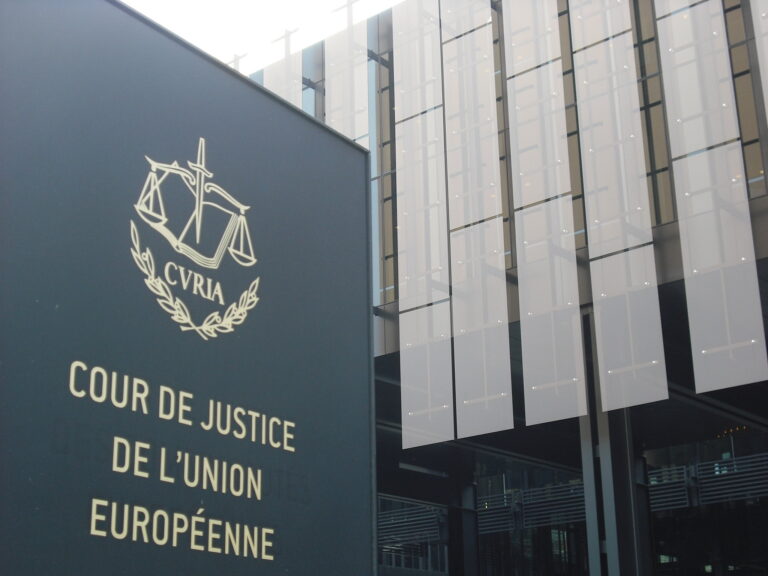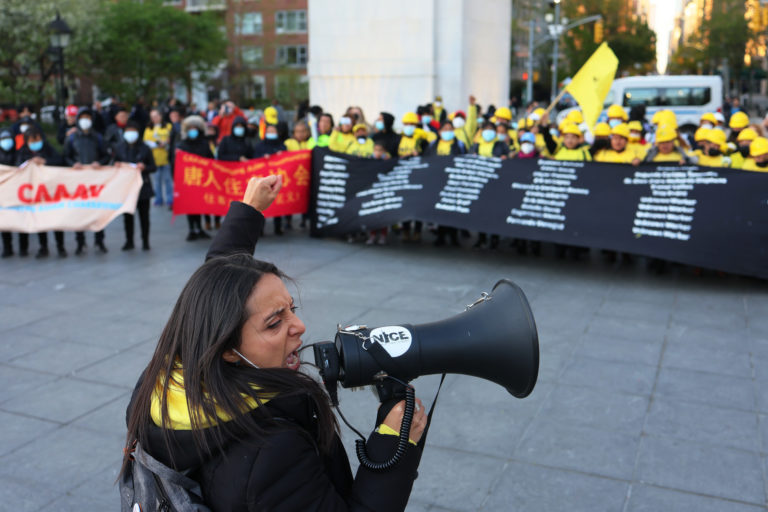Jing He is a student at Harvard Law School and a member of the Labor and Employment Lab.
As reported by Vox, “You wouldn’t rent an apartment or even buy a pair of jeans online without knowing the price. Soon, many Americans won’t search for a job without knowing what it pays, either.” Recently, the City of New York has taken a step in the direction of pay transparency: candidates in NYC will no longer have to search for a job without first learning the salary range that the job will pay.
NYC’s pay transparency law took effect on November 1, 2022. According to the Law, employers in NYC with four or more employees who have at least one employee working in the city must disclose a good faith range of salary they will pay for each job, promotion, or transfer opportunity they advertise. Failure to do so will be considered an unlawful practice.
Background
The issue of pay inequality based on sex and race remains an acute problem. The U.S. Bureau of Labor Statistics reports that women get paid about 83.1% of what men do, and the gap widens for women of color. Women won’t achieve pay equality until 2059, according to the Institute for Women’s Policy Research, if the pay gap continues to close at the same rate it has over the previous 50 years. The pace is even slower for women of color.
Economists and other researchers believe that pay transparency can lead to pay equality. When pay is transparent, when salary ranges are published, employers find it more difficult to impose pay differentials on candidates of different sexes and races. For current employees, pay transparency allows them to negotiate for better pay if they find themselves making less than others in similar positions. Since the Law requires disclosure of a pay range instead of a fixed salary, however, the Law cannot ensure that employers won’t discriminate against candidates by offering them lower or higher pay within the range.
A Broader National Context
NYC’s pay transparency law is one of several similar efforts. Before NYC, Colorado enacted a pay transparency law on January 1, 2021. The pay transparency laws in Washington and California will go into effect on January 1, 2023, while another law in New York State is awaiting approval and is anticipated to come into force at the beginning of 2023.
What the Law Requires
Which employers are covered by the Law?
The Law applies to all employers who have four or more employees or one or more domestic workers. The law does not require that the four employees work together in the same location nor that they all work in NYC. Employment agencies are also covered by the Law. Temporary help firms, however, are not covered.
Which job listings are covered by the Law?
The Law covers all job, promotion, and transfer advertisements for positions that would be performed in NYC, including remotely. A written description of a position that is open for application, a promotion, or a transfer is considered an “advertisement”. Employers are not, however, prohibited by the Law from hiring positions without posting an advertisement.
What should be included in job advertisements?
Employers must state the minimum and maximum annual salary or hourly wage for the position in a job advertisement. The range must be presented in “good faith”, which means what the employer believes at the time of the posting it would pay for the advertised opportunity.
Salary does not include other forms of compensation or benefits offered for the advertised job, such as health, life or other insurance, paid or unpaid time off, and stock options. Employers are free to disclose such information although not required to.
What remedies do employees, applicants and candidates have if the employer violates the Law?
An employee may bring a civil action against their current employer for an alleged violation of the Law. The employee may claim damages, including punitive damages and injunctive relief. Applicants and/or candidates, however, do not have such a cause of action. Still, applicants and candidates can file complaints at the NYC Commission on Human Rights (“Commission”) alleging violations of the salary transparency protection.
What are the penalties for violations?
The Commission accepts and investigates the aforementioned complaints. If employers can prove to the Commission that they have corrected the violation within 30 days of receiving the Commission’s notice, they will not be subject to a civil penalty for a first complaint. However, for a first breach of the Law that is not remedied and any subsequent violations, employers may be fined by the Commission up to $250,000.
Reactions to the Law
Before the effective date of November 1, the majority of large employers have started to provide pay ranges on job postings. Companies have also examined current pay scales and trained managers for prospective pay-related dialogues with employees and candidates.
Meanwhile, the “good faith” standard for posting ranges has been put to the test. People have questioned job postings with unreasonably large salary ranges. For instance, someone on Twitter called the salary range of $50,000 to $145,000 for a reporter role “deeply unserious”.
Some employers have taken down their public job postings and switched to other forms of recruiting, such as inviting candidates to send their resumes to a general email address, and hiring staffing agencies to identify candidates for them.
Colorado’s pay transparency law is similar to NYC’s and has an approximately two-year track record. As of July 5, 2022, three employers had been fined for violating Colorado’s pay transparency law (with fines ranging from $2,000 to $34,500). Research on Colorado’s pay transparency law shows that posted salaries increased by about 3.6% following the law. However, the research did not touch on the data on the gender pay gap in Colorado.
Looking Forward
Despite some employer opposition to transparency measures, disclosing pay can be a useful recruitment tool. According to research reported by CNBC, for example, more than half of job seekers say they won’t apply for a position if its pay isn’t published.
Finally, while the current pay transparency laws focus on new job postings, pay transparency in existing positions may be even more effective. For instance, a study on a 2006 law in Denmark that required certain employers to disclose gender-segregated wage statistics to employees showed that the gender pay gap declined by two percentage points. Looking forward, therefore, some argue that pay transparency laws in the US should extend to existing positions.







Daily News & Commentary
Start your day with our roundup of the latest labor developments. See all
December 19
Labor law professors file an amici curiae and the NLRB regains quorum.
December 18
New Jersey adopts disparate impact rules; Teamsters oppose railroad merger; court pauses more shutdown layoffs.
December 17
The TSA suspends a labor union representing 47,000 officers for a second time; the Trump administration seeks to recruit over 1,000 artificial intelligence experts to the federal workforce; and the New York Times reports on the tumultuous changes that U.S. labor relations has seen over the past year.
December 16
Second Circuit affirms dismissal of former collegiate athletes’ antitrust suit; UPS will invest $120 million in truck-unloading robots; Sharon Block argues there are reasons for optimism about labor’s future.
December 15
Advocating a private right of action for the NLRA, 11th Circuit criticizes McDonnell Douglas, Congress considers amending WARN Act.
December 12
OH vetoes bill weakening child labor protections; UT repeals public-sector bargaining ban; SCOTUS takes up case on post-arbitration award jurisdiction